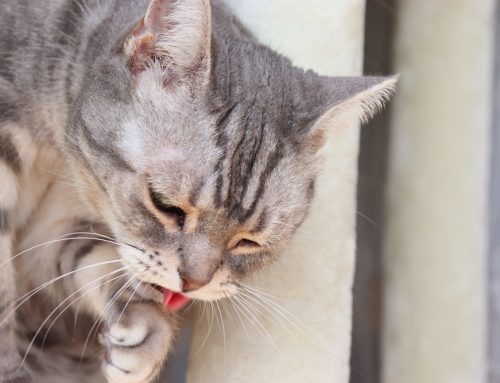Pet Times |
Oct 2015 |
In this issue we:
|
Tidmore Veterinary Hospital 2914 Lurleen B. Wallace Blvd Northport, AL 35476 (205) 339-5555 |
Halloween, AKA the beginning of “Chocolate Season”
Veterinarians across the country treat dogs and cats for all kinds of poisons throughout the year, including plants (like sago palm in dogs), flowers (lilies are toxic to cats), xylitol (a sweetener that is toxic to dogs), and lots of human medications, from Alzheimer’s medication to Zoloft.
And, of course, chocolate in dogs. The toxic ingredients in chocolate are methylxanthines, including theobromine and caffeine, and the amount varies with the type of chocolate (the darker the chocolate, generally the more caffeine is present). White chocolate has very little (0.25 mg per ounce), milk chocolate has about 200x more than white, and baker’s chocolate has 8x more than milk chocolate. Baker’s chocolate is dangerous, even in large dogs!
The methylxanthines in chocolate can cause agitation and hyperexcitability, but can also cause more serious problems, including altered heart rhythm. These cases need medical treatment! Chocolate ingestion can also cause pancreatitis.
Halloween is the beginning of “chocolate season,” that time of year when Americans consume the most chocolate, and continues through the traditional holiday season to Valentine’s Day and Easter. During this time, chocolate tends to be more accessible, and we see more dogs that have ingested chocolate.
Please, keep the chocolate away from your dogs (including off the counter or table, if you have a “surfer”)!
And please, don’t forget all of the other fun problems vets associate with Halloween – xylitol from hard candy and all those wrappers!
Another danger that comes around whenever the front door is repeatedly opening and closing is loose dogs. Please make sure their collars (and tags) are on, and your microchip info is up to date!
|
Find us on
|
In Case of
Emergency |
Speaking of poisonings…
We’ve mentioned this site before, a colleague putting together huge numbers of pet owners to influence the way retailers label their products and reduce the incidence of pet poisonings. Check them out at PreventingPetPoisoning.org, or click on the image to watch the video. Please, join them, and share this video and the info with your friends and family!
Rabies, still relevant…
What does a Russian man photographing a hedgehog have in common with a veterinary technician bitten by a kitten?
They both had to be treated for rabies exposure.
The Russian man was bitten while photographing a hedgehog he found in the countryside during the day (hedgehogs are normally nocturnal, which should be been the first clue). The technician in West Virginia, though, was handling a stray kitten that was eating well and showed no signs at the time of rabies infection.
September 28 was the anniversary of the death of Louis Pasteur, the French chemist and microbiologist that produced the first rabies vaccine, and is termed “World Rabies Day,” to raise awareness of the virus that kills an estimated 59,000 people a year, mostly children, and mostly in Africa and Asia. Most of these cases are caused by dog bites, and the effort to eliminate dogs as a potential threat in these areas results in the death of approximately 20 million dogs every year (and not usually by humane methods).
Why do we still vaccinate our pet dogs against rabies? Because the potential for exposure is there, from wildlife to kittens. Just because we are in the US doesn’t mean we don’t occasionally see cases of rabies (just ask the vet tech from West Virginia). And the penalties for not having them vaccinated, should a bite occur… depends on the city/county, but they can be harsh.








Leave A Comment